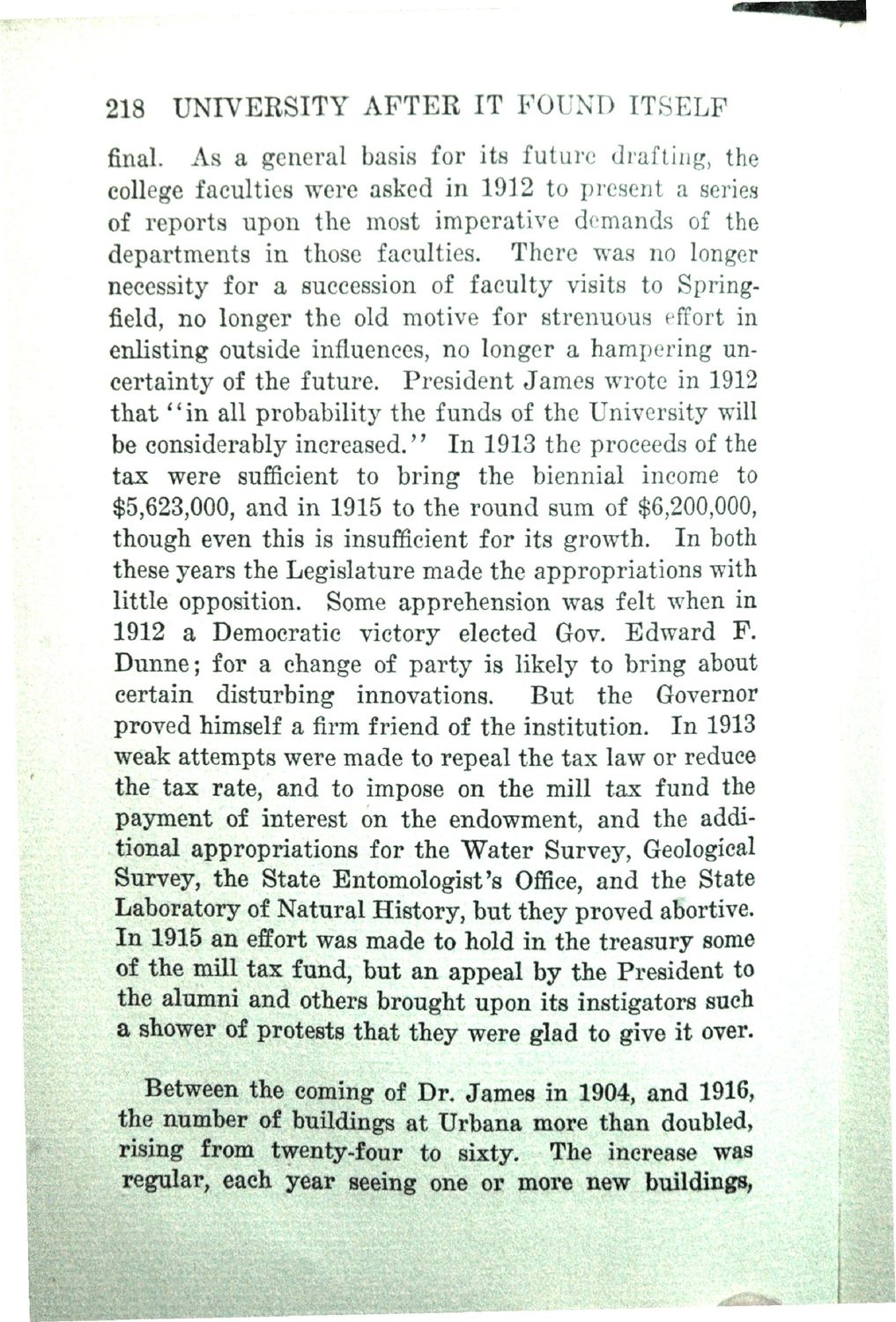| |
| |
Caption: Book - History of the University (Nevins)
This is a reduced-resolution page image for fast online browsing.

EXTRACTED TEXT FROM PAGE:
218 UNIVERSITY AFTER IT FOUND ITSELF final. As a general basis for its future drafting, the college faculties were asked in 1912 to present a series of reports upon the most imperative demands of the departments in those faculties. There was no longer necessity for a succession of faculty visits to Springfield, no longer the old motive for strenuous effort in enlisting outside influences, no longer a hampering uncertainty of the future. President James wrote in 1912 that " i n all probability the funds of the University will be considerably increased." In 1913 the proceeds of the tax were sufficient to bring the biennial income to $5,623,000, and in 1915 to the round sum of $6,200,000, though even this is insufficient for its growth. In both these years the Legislature made the appropriations with little opposition. Some apprehension was felt when in 1912 a Democratic victory elected Gov. Edward F. Dunne; for a change of party is likely to bring about certain disturbing innovations. But the Governor proved himself a firm friend of the institution. In 1913 weak attempts were made to repeal the tax law or reduce the tax rate, and to impose on the mill tax fund the payment of interest on the endowment, and the additional appropriations for the Water Survey, Geological Survey, the State Entomologist's Office, and the State Laboratory of Natural History, but they proved abortive. In 1915 an effort was made to hold in the treasury some of the mill tax fund, but an appeal by the President to the alumni and others brought upon its instigators such a shower of protests that they were glad to give it over. Between the coming of Dr. James in 1904, and 1916, the number of buildings at Urbana more than doubled, rising from twenty-four to sixty. The increase was regular, each year seeing one or more new buildings,
| |